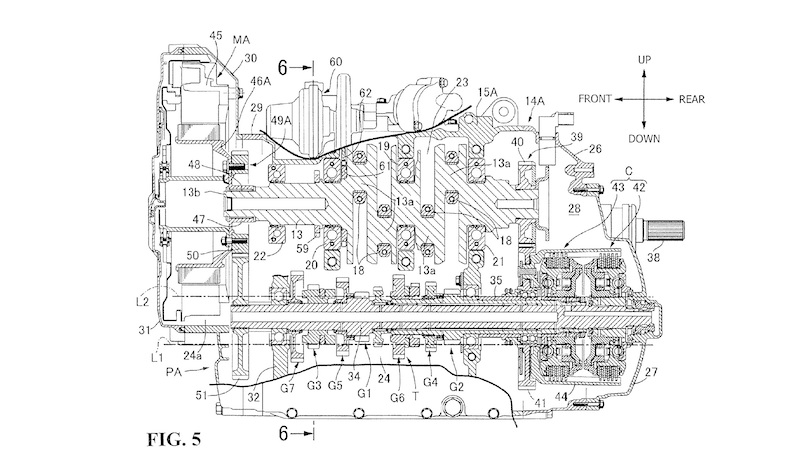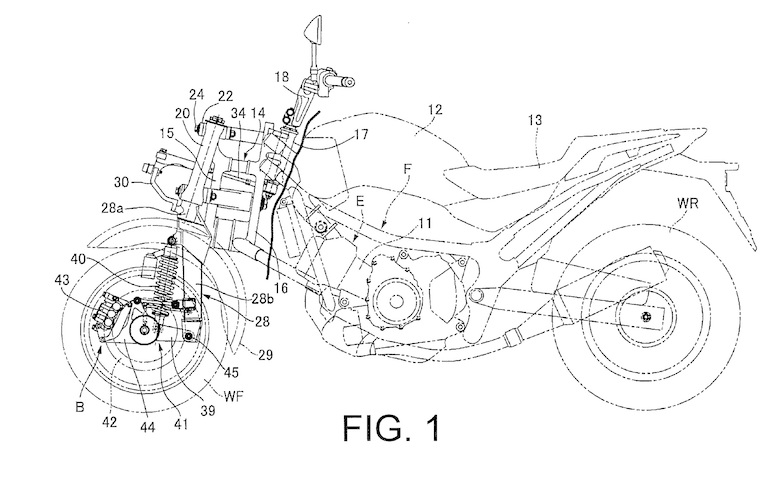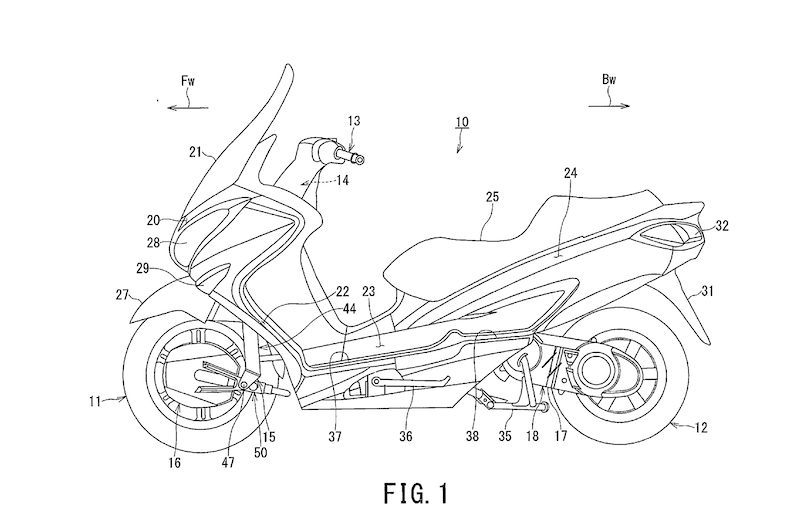Honda hybrid engine
The Honda Neo Wing concept might be a three-wheeled oddball, but we reckon it hints at the design of the next-generation Goldwing – not least because of the flat-four engine, which is boosted by an electric motor to be a true hybrid. A new patent reveals the engine’s hybrid electric drive section, which uses a large electric motor that doubles as a generator and is bolted directly to the front of the engine. The motor’s position means it can share the engine’s water-cooling system, while it’s also exposed at the front to take advantage of air cooling.

Three-wheeled NC750
in 2015 we revealed that Honda was working on a three-wheeled derivative of the NC750, with two different design options. Now there’s a third possible layout, and it appears to be the simplest and cheapest of all. It uses a transverse parallelogram set-up, but with uprights running down vertically, just behind the front hubs. Short, forward-facing links and individual spring/damper units provide the suspension to each wheel. The system is very similar to that used on Piaggio’s MP3, the first of the modern generation of tilting trikes.

Suzuki 2WD scoot
Suzuki has patented a system to electrically drive the front wheel of an otherwise-conventional petrol-powered twist-and-go. Mimicking the recently patented BMW idea to use an electric motor powering the front wheel while a piston engine drives the rear (see Vol 66 No 20), the Suzuki is another take on the idea of hybrid petrol-electric bikes. While the basis of the hub-mounted electric motor and internal reduction gearing system that allows it to turn the front wheel isn’t a new idea, Suzuki’s patent focuses around the use of a leading-link suspension system to hold the whole lot.

Bike-sensing tech from Ford
With autonomous vehicles on the rise, Ford has filed a patent for a system that specifically looks out for motorcycles travelling between rows of cars. The American company’s patent for ‘Detection of Lane-Splitting Motorcycles’ shows how it plans to use not only cameras but also microphones located around its future autonomous cars to keep both an eye and an ear open for bikes. At least it shows that motorcycles – and the living humans riding them – are not being forgotten.
By Ben Purvis











